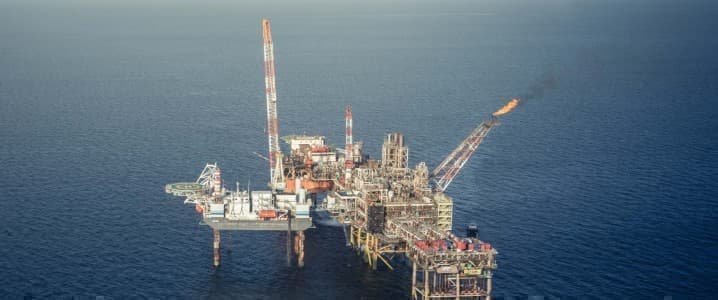The global upstream sector is set for a rebound next year, when overall investment in exploration and production is expected to exceed $400 billion for the first time in three years. Yet, despite record high cash flows and oil at over $70 a barrel, reinvestment rates will stay at near record low levels in 2022, as companies will maintain discipline in spending and pay more attention to climate and shareholder pressure to decarbonize operations, Wood Mackenzie said in its Global Upstream Outlook 2022 report.
After a year of recovery in 2021, following the crash and crisis of 2020, the oil and gas industry is generating record or near record cash flows these days.
Capital Discipline Prevails
However, cash flows are being allocated to higher shareholder payouts in the form of share buybacks and raised dividends instead of significant increases in drilling activity. It’s nothing new for Big Oil to use high cash flows to repurchase shares and boost dividends. This year has shown that the U.S. shale patch has also pivoted to returns for investors and has abandoned the relentless drilling and investing all the cash flows (and even borrowing to invest) in new wells.
Shale-focused U.S. producers, as well as international majors and national oil companies (NOCs), continue to be careful with upstream spending, even if oil prices have held above $70 per barrel for most of the past six months.
According to Wood Mackenzie, capital discipline will still be a major theme in upstream oil and gas in 2022. Total global upstream investment is set to increase by 9 percent to over $400 billion next year.
This will be the first time that overall upstream spending will have exceeded $400 billion annually for the first time since 2019.
Despite the expected higher investment next year, the global reinvestment rate – calculated as capital investment divided by pre-dividend post-tax operating cash flow – will stay near record lows, according to WoodMac.
Among Big Oil, no one is splurging on investment these days, unlike in the years prior to the 2015 price crash, when companies were spending as if oil would stay at $100 a barrel forever.
Related: Canada And The UK Are Eyeing Massive Tidal Power Developments
Sure, capex for 2022 is set to be higher at all five majors – ExxonMobil, Chevron, Shell, BP, and TotalEnergies – compared to 2021 and 2020, but it’s nowhere near 2014 levels. Capital discipline is still the keyword in all earnings releases and calls, where higher dividends and share buybacks take precedence when it comes to allocating record cash flows.
The five largest international firms are also raising capital spending on low-carbon energy, including the U.S. supermajors who differ from their European competitors in strategy by not being willing to invest in any solar and wind power generation. Instead, Exxon and Chevron plan to focus on renewable fuels and carbon capture and storage (CCS), both to cut their own carbon footprint and to develop in partnership regional CCS hubs in heavily industrialized areas.
Industry Cash Flows Could Reach $1 Trillion In 2022
“At a Brent price of around US$70/bbl, oil and gas cash flows will be at near-record levels. At US$80/bbl, it would soar towards US$1 trillion (on a post-tax, post-capex, pre-financing and dividends basis),” Fraser McKay, Vice President, upstream research, at Wood Mackenzie, says.
Despite record cash flows, the oil and gas sector faces ‘peak uncertainty’ next year amid climate and shareholder pressure, WoodMac says. The industry faces increased pressure to reduce emissions and show investors it could be part of the solution – not the problem – in the global drive toward decarbonization. Related: Saudi Arabia Doubles Down On Asian Demand
Although cash flows could hit records next year, “for many stakeholders and even some chief executives, the sector’s risks outweigh its upsides. This tension will define 2022,” according to Wood Mackenzie’s McKay.
Uncertainties Mount
Strategic choices in investment in clean energy solutions, responding to the pressure to decarbonize, and portfolio repositioning will be next year’s key themes for all oil and gas companies—from the supermajors and the NOCs to the U.S. independent oil and gas producers, Tom Ellacott, Senior Vice President, Corporate Research, at Wood Mackenzie, wrote in a recent report with an outlook of what to expect in 2022.
“Companies will allocate more capital to upstream decarbonisation. Value accretive solutions, which increase product sales, will continue to lead the way, but CCS projects will gain momentum and attract new participants,” Wood Mackenzie’s McKay said in WoodMac’s Global Upstream Outlook 2022.
The energy research firm expects operators to sanction in 2022 more than 40 projects over 50 million barrels of oil equivalent (boe) each, with low-breakeven, low-carbon deepwater projects dominating greenfield final investment decisions (FIDs).
The upstream oil and gas industry is set for a rebound next year, but overall investment of $400 billion will still lag the needed around $540 billion to stave off a supply shortage within a few years’ time. In addition, the pressure to decarbonize would also shape the industry’s future investment choices, both in 2022 and in the long run.
By Tsvetana Paraskova for Oilprice.com
More Top Reads From Oilprice.com:
- Cocaine, Guns And Gushers: Colombia’s Oil Industry Struggles To Reactivate
- Waste Disposal Back In The Spotlight As America Ramps Up Nuclear Sector
- Brazil Rushes Ahead With Key Oil Projects As Prices Remain Elevated


















